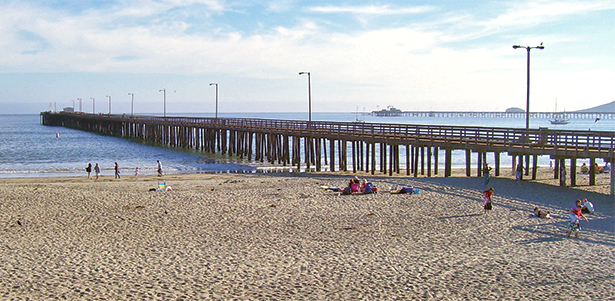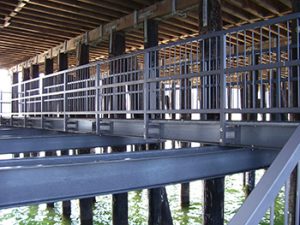Retrofitting Structures with Polymer Composites
Life-cycle costs in any architectural project are difficult, if not impossible, to predict. Estimates are often based on equivalent materials in equivalent conditions. Yet these calculations are rarely accurate, which can impact the efficiency of maintenance and management systems. Complicating this issue is the fact that effective maintenance is often hindered by the priority of reducing overall life-cycle costs. Project managers may avoid non-essential maintenance in a bid to avoid up-front expenditure, but this could have dire cost-consequences down the line.
Polymer composites have emerged as a cost-effective solution for essential maintenance in a range of markets. They can provide appreciable long-term performance benefits to significantly reduce the life-cycle costs of structures. Tailor-made polymer composite parts also offer a raft of immediate installation advantages that rapidly justify the cost of initial installation.

In this blog post, Strongwell explores the benefits of retrofitting existing structures with polymer composites.
What is Retrofitting?
The idea of retrofitting existing structures with new materials and technologies is often associated with complex and costly installation. Worst case scenarios where a retrofit is executed poorly result in a haphazard solution; the benefits of which may not justify the initial effort. However, retrofitting with polymer composites can be a relatively painless process.
If a metal part has succumbed to rust and needs replacing, the new part may need to be manufactured and profiled within an acceptable degree of tolerance at an off-site metalworking facility. This will then be transported to the site, incurring transportation costs. It may also pose a safety risk if the part is heavy or unwieldy. Subsequently, metal replacement parts often need to be transported and positioned by trained personnel with specialist equipment. Even if all these factors have been considered, retrofitting and replacement can still be undone if the part deviates from the acceptable form fit due to expansion/contraction of the metal, or simply due to human error.
These concerns do not arise when using fiber reinforced polymer composite parts, which can be field-fabricated and machined using simple carpenter’s tools. They weigh as much as 80% less than similar steel shapes, mitigating many of the safety concerns while simplifying the process of positioning and installation. Corrections to the polymer composite profile can be made rapidly on-site. This provides demonstrable up-front cost benefits that continue to pay dividends through the service life of the component.
Polymer Composite Retrofitting Success Story
Strongwell has been involved in the development of advanced polymer composites for over 60 years, continuously demonstrating the ever-improving performance of pultruded fiberglass products in various applications.
 Our polymer composites are virtually maintenance-free in even the harshest of operating conditions. They are impervious to oxidization and boast excellent resistance to chloride corrosion, a common issue in marine applications. Rusting and chlorine corrosion are one of the leading causes of mechanical failure in coastal fascia and architecture. The Avila Beach Pier in California suffered from high life-cycle costs due to the demanding maintenance and management of the pier’s metal support system.
Our polymer composites are virtually maintenance-free in even the harshest of operating conditions. They are impervious to oxidization and boast excellent resistance to chloride corrosion, a common issue in marine applications. Rusting and chlorine corrosion are one of the leading causes of mechanical failure in coastal fascia and architecture. The Avila Beach Pier in California suffered from high life-cycle costs due to the demanding maintenance and management of the pier’s metal support system.
The pier had also suffered following an oil spill in 1990, which prompted a pier reconstruction initiative to try and improve tourism to the area. This further highlights the inaccuracy of life-cycle cost forecasting. Strongwell’s solution was to reconstruct the pier support system with a range of polymer composite products, from I-beams and channel profiles to fiber reinforced grating.
Our polymer composite pier support system has demonstrated superior strength and corrosion-resistant properties compared to traditional materials. Those in charge of the reconstruction project were so pleased with the easy integration of a polymer composite retrofit, that fiberglass structural components have now been prioritized for future waterfront repairs.
If you would like to learn more about using polymer composites to improve maintenance and management systems, or for retrofitting existing structures, simply contact a member of the Strongwell team.